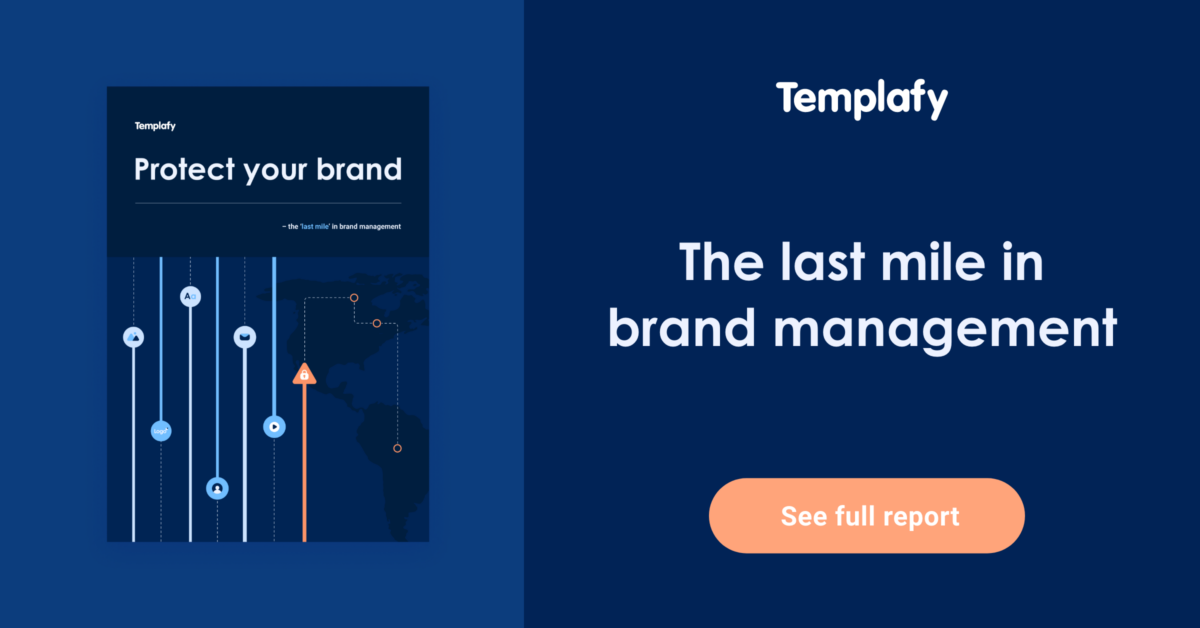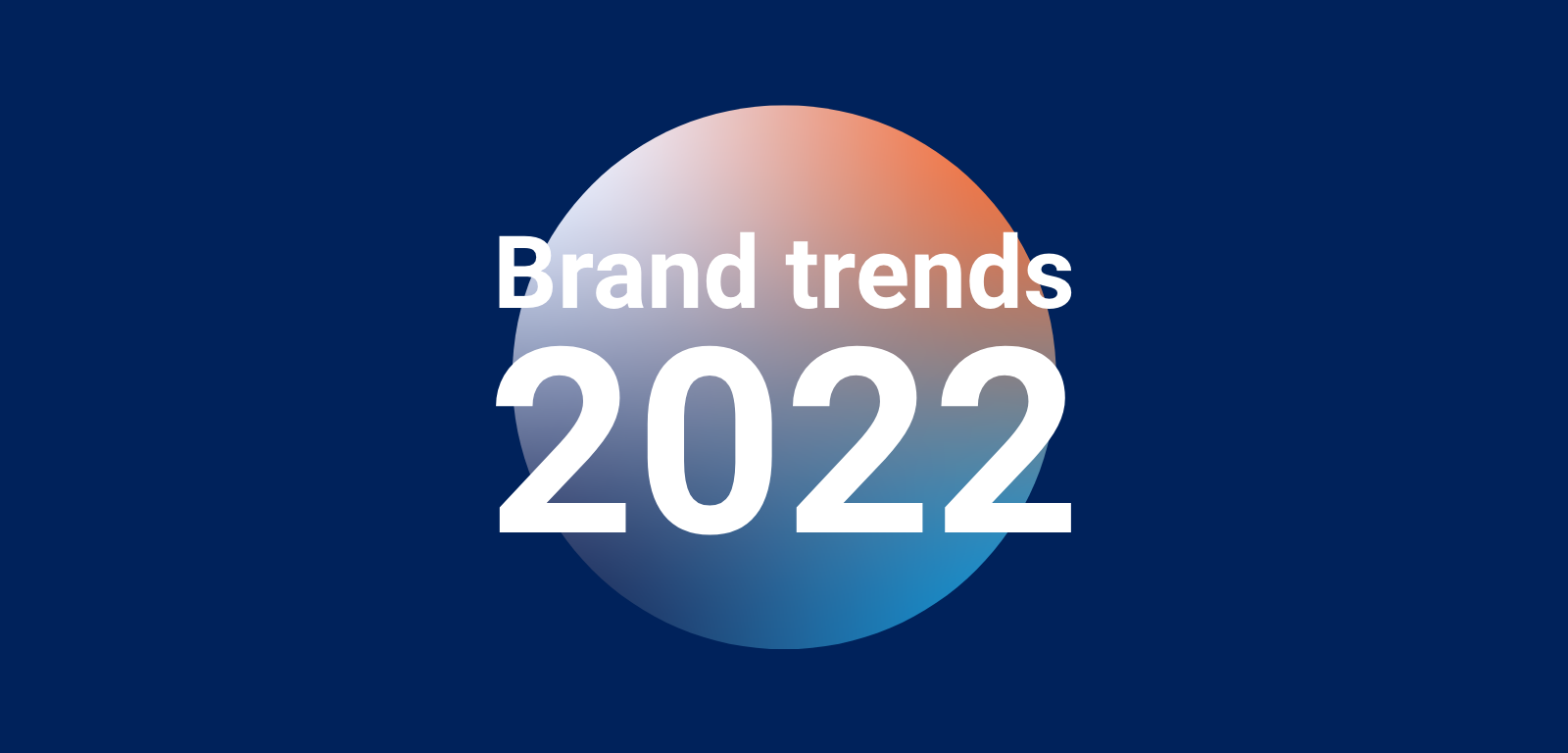While 2022 promises a return to some degree of normalcy, the legacy of a lockdown era will still be felt in many areas of our personal and work lives. Branding is one of these areas.
Branding isn’t static. It evolves with its environment, adapting to cultural, technological, and societal shifts. While each business and brand is unique, design trends help point us in the direction of these wider changes, allowing us to create brands that remain relevant and appealing to our audiences.
From minimalist designs to metaverse-friendly assets, 2022’s major branding trends reflect a growing need to tailor a brand’s look, voice, and stories for an online audience that is bigger and more demanding than ever.
Whether producing more accessible visuals or preparing to make a mark in new virtual spaces, below, we explore four influential branding trends you should be aware of in 2022.
Summary: branding trends for 2022
2022’s key branding trends focus on producing better digital brand experiences for growing online audiences and new environments. In this post, we cover four of this year’s major branding trends, including:
- Logos get a minimalist makeover
- Color palettes are enhanced for digital
- Brands prepare for the metaverse
- Authentic purpose drives branding

1. Logos get a minimalist makeover
The past couple of years have supercharged the volume of data we create, capture and consume globally. To cut through this digital noise and appeal to today’s oversaturated audience, a growing number of brands are ditching busy and intricate logo designs for easier-to-digest, minimalist aesthetics.
This shift to a more refined look can be seen in many of the most impactful logo redesigns of 2021. Last year, the likes of Renault, Paramount, Volvo, Magnum, and Transferwise all opted for simplified versions of their designs - flattening logos, removing graphic elements, and reducing the color palette of their major brand emblems.
Burger King’s brand refresh, the first in 20 years, is a great example of the power of this minimalist approach. The fast-food giant revamped its colorful 1999 logo with more subtle colors, a simplified and flattened two bun design, and a playful new custom typeface, Flame Sans. The result is a clean, confident and modern brand visual that communicates the brand’s identity clearly, and quickly in the current digital landscape.
Image credit: Dezeen
2. Color palettes are enhanced for digital
Burger King’s new look serves up another major 2022 branding trend, the optimization of color palettes for virtual environments. Switching out its bright colorways for softer, warmer tones of “Fiery Red, Flaming Orange, and BBQ Brown,” the F&B player joins a number of leading brands exploring how color can help improve online engagement and experiences.
Recent brand refreshes from Facebook to Pfizer, Papa Johns to Upwork, all feature more vibrant colors as well as refined color combinations that grab your attention and make assets more accessible in noisy digital spaces.
Visa is another high-profile example of this digitally-led color strategy, with the company’s “multi-year brand evolution” featuring “refreshed colors for digital impact.”
Image source: Business Wire via Visa
With offices worldwide moving in and out of lockdown throughout 2021, one of the lasting legacies of the pandemic has been the sustained reliance on digital events, meetings, and working environments. Similarly, many consumer brands pivoted to virtual models and solutions, investing in new products and services to serve their online communities better.
Although this year promises a return to some form of pre-pandemic normalcy, people are spending more time online than ever before. Brands need to use all possible branding tools to connect and communicate with this online community so they can operate effectively and competitively in their new digital homes.
3. Brands prepare for the metaverse
Facebook’s rebrand to Meta in October 2021 was one of the most talked-about branding events in recent history, with particular hype generated around the company’s new brand focus on the metaverse.
Video credit: Facebook
The metaverse covers any online experience that is immersive, three-dimensional, and takes place in a virtual, not physical, world. It’s a place where people can interact, learn, socialize, shop and collaborate in real-time within a digital environment.
While this world of non-fungible tokens (NFTs), avatars, and holograms may seem futuristic and overwhelming for the average business, it isn’t something to be ignored. Experts are advising companies across all sectors to start thinking about what their brand will look like and how they’ll behave in what is widely believed to be the next stage of the Internet.
With the metaverse providing new routes to social commerce, which in the US in 2021 alone is thought to have totaled $36 billion, we’re already seeing pioneering consumer brands making their mark in this space.
Nike is creating virtual sneakers and collectibles that will be available exclusively through its metaverse-hosted retail environments. Louis Vuitton launched Louis the Game, where users could purchase branded prints and products as NFTs for their customizable avatar. Gucci collaborated with leading online game Roblox to gamify the release of limited digital edition Gucci Dionysus bags. A sign of the lucrative potential of the metaverse, these virtual bags were re-sold on Roblox’s marketplace for $4,115, costing more than physical versions of the luxury bag.
Tweet Link: here
The metaverse isn’t just a playground for Gen Z targeting B2C facing brands. For example, a large pillar of Facebook’s metaverse strategy is creating highly collaborative, global virtual workspaces. Microsoft is also planning to migrate its cloud services to the metaverse, and Tech firm Nvidia has called on companies to invest in metaverse simulations to reduce waste and produce better solutions in areas such as manufacturing and logistics.
There are opportunities for businesses of all backgrounds in the metaverse. So, expect 2022 to be a year of experimentation and branding creativity within this virtual space, with early gains made by brands brave enough to enter the metaverse.
4. Authentic purpose drives branding efforts
Purpose-led branding isn’t a new trend. Being socially responsible and taking part in meaningful conversations has been on global business agendas for a while now. What’s new in 2022 is that people have higher expectations than ever for the brands they interact with.
In Havas Media Group's 2021 Meaningful Brands report, 73% of surveyed consumers expected brands to act now for the good of society and the planet, and according to an Edelman, 68% of consumers think that corporations have the power to influence societal change. For younger generations, this brand purpose is even more important.
Branding plays a key role in realizing this purpose. The position, visual elements, and voice a company applies to important topics all contribute to how effectively a brand is able to communicate and connect to its audience. From the science-inspired designs of Olay’s #FacetheSTEM campaign to the packaging of Ben & Jerry's “guilt-free” ice cream, brands use branding elements to help tell a company’s unique CSR story.
Image credit: Adweek
Branding, however, cannot compensate for weak purpose campaigns or fool today’s generation of smart and skeptical consumers. Revisiting Havas’ study, 71% of consumers don't believe brands will deliver on their CSR promises, with the report concluding that “CRS washing” - a failure of corporate social responsibility (CSR), poses a serious threat to the survival of today’s businesses.
A recent example of purpose-led branding that fell short is the 2022 rebranding of M&M’s iconic candy mascots. Aiming to present a more inclusive and current brand image, parent company Mars Wrigley gave the infamous M&M’s characters a less gender-focused makeover. Female characters, for instance, were redesigned to be “more about confidence than sex appeal”, losing their heeled shoes, flirty stances, and Ms title.
Tweet link: here
While M&M’s had hoped their brand refresh would cultivate a greater sense of belonging within its community, the new branding led to a backlash across social media networks. Many expressed confusion rather than celebration, accusing the company of “woke washing” and creating something that wasn’t needed or appropriate.
What this branding example highlights is that consumers don’t just expect purpose. They expect authentic purpose. If you’re taking a stand on issues beyond profit and growth, make sure your move will make sense to your audience, and you have the ability to support your positioning.

In conclusion: brands need to consider how they look and behave in digital spaces
All four of the above 2022 branding trends share one common goal - to optimize a brand for digital spaces. Whether that space is a company website, Twitter, or the metaverse, businesses need to present brands that online audiences find easy to access, engage with, and trust.
As we’ve discussed, today’s online communities are both smart and demanding. They expect more from the brands they interact with, and in 2022 a consistent brand experience is a standard requirement for B2C and B2B audiences. Users need to be able to move between your channels and different forms of content seamlessly if you want to maintain their interest within noisy and competitive online environments.
A year of increased activity around digital brand optimization guarantees an exciting time for the world of brand design. However, this exciting potential of brand evolutions and new design work will only be fully realized if businesses support optimization efforts with brand consistency.
Creating a consistent brand experience is a real challenge for many organizations. In a push to present the next iteration of their brand world, businesses tend to take a highly regulated and controlled approach to their hero campaign assets - the advertisements, collaborations, social media creative, and website graphics. Yet, they fall short on everyday documents and files such as presentations, emails, invoices, pitch decks, and proposals.
When the average employee creates 10,000 emails, documents, and presentations each year, this lack of consistency in a brand’s content strategy becomes problematic. People don’t want to be lured in by a slick brand world, only to start engaging with a brand with a different look, feel and voice. This contrast can lead to confusion and distrust, posing a risk to the integrity and value of old and new brand work.
Content enablement solutions such as Templafy allow you to control every step in the brand asset supply chain, enabling you to maximize brand compliance and consistency across all communication channels. Our platform makes staying on-brand easier than going off-brand, with a range of tools and features that empower companies to secure their brand right down to the smallest detail.
To find out more about how Templafy can help ensure your 2022 brand world is consistent and compliant, check out our latest publication on how to Protect your brand:





